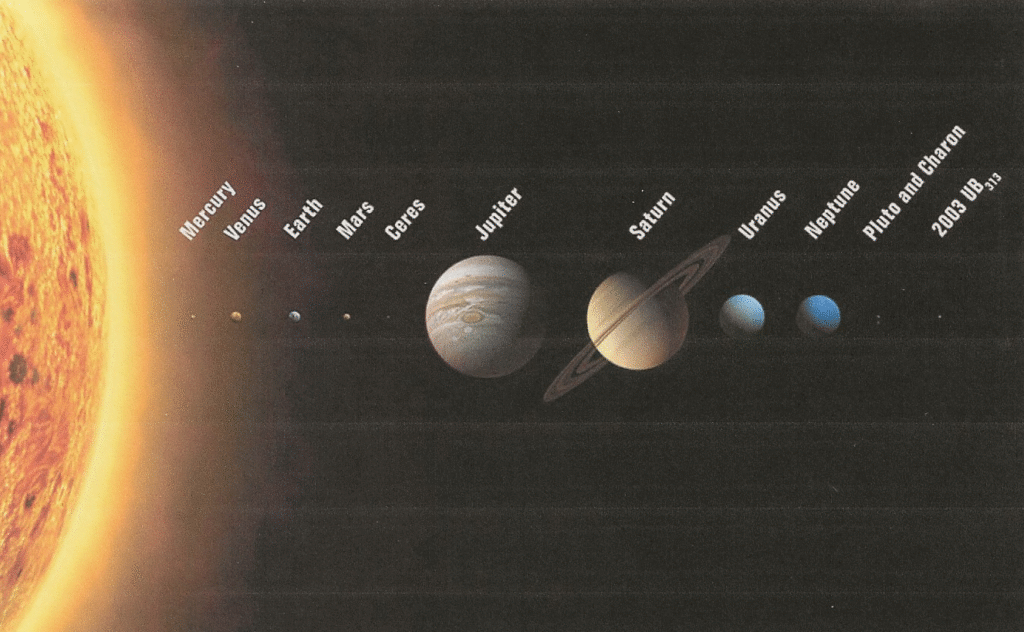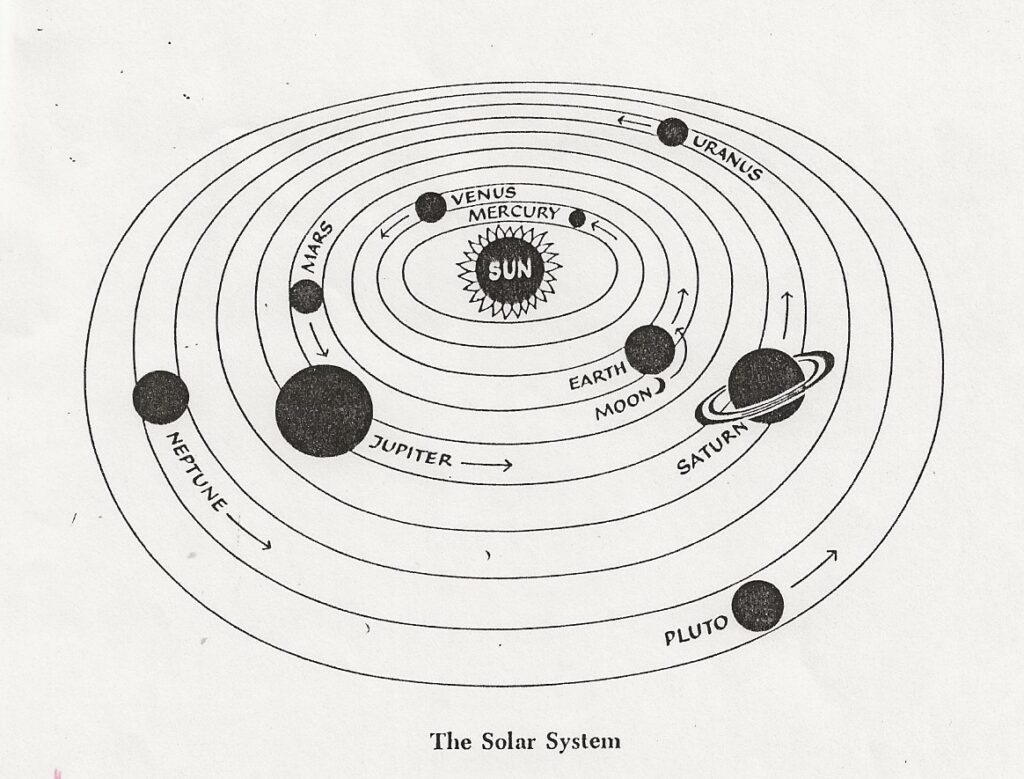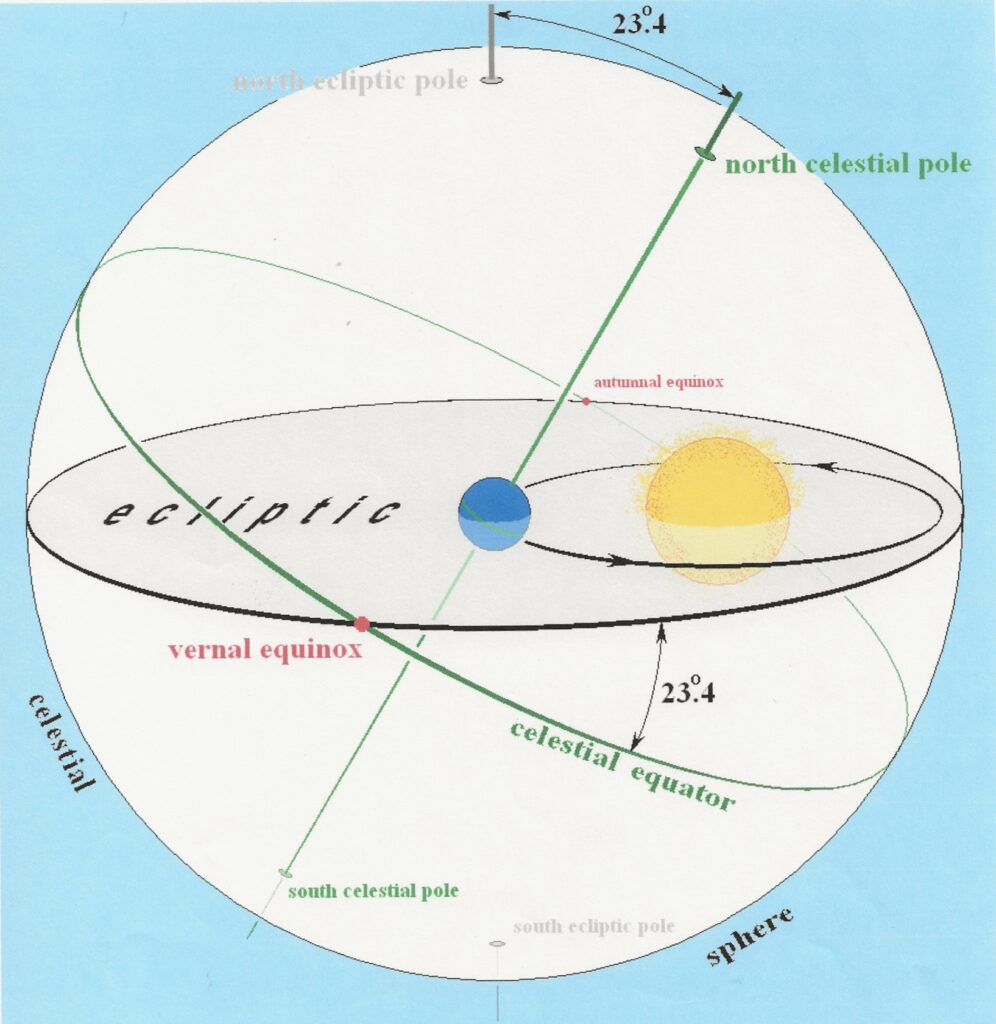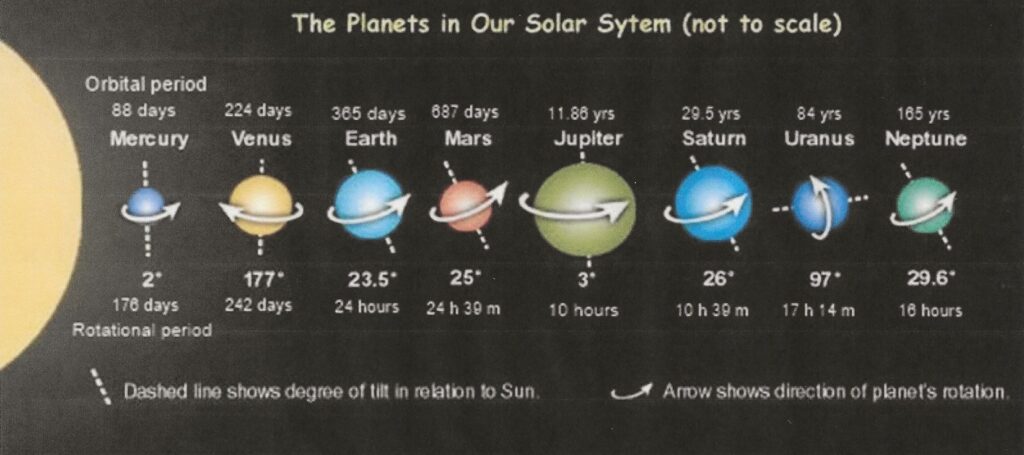THE SYSTEM
I want to offer some information about the system that we live within, as well as which we attempt to describe when creating a horoscope.
First, we need to understand the system that we are working with. Our view is from Earth. From our position on the face of the earth we are able to look at and thru the Sun to one part of our solar system and the stars beyond. We can also look away from the sun (or thru the nighttime sky) to the other “side” of our solar system and to the stars beyond. Can you visualize yourself standing outside the solar system, possibly near Sirius or some other close star, looking in, and picture the actual physical structure of the solar system? It would look like the graph below. The scale is not correct but the planets are in their correct placements outwards from the Sun.The scale is not correct but the planets are in their correct placements outwards from the Sun.


If you were to geometrically represent the paths of the planets orbiting around us (from our perspective), the resulting shape would be a disk. That disk or plane where the Sun and most of the planets appear is called the ecliptic.

The planets are moving, all in the same direction, around the Sun. They all make their revolutions around the Sun within that plane. At the same time each planet is rotating around its axis. Most of the planets rotate counterclockwise. However, both Venus & Uranus rotate clockwise. One other unusual factor is that all the planets except Uranus rotate around an axis that is vertically oriented so they move along their path around the Sun while rotating sideways. This is why we experience days and nights and why the Sun seem to move through the sky from east to west. Uranus, however, as you can see in the diagram below, rotates on an axis that is horizontal to its revolutionary path so it seems to tumble along as it moves through its orbit.

Now, if you can conceptualize this system with yourself sitting on earth near the center, then if you stare out along the plane of the ecliptic, you would see the constellations as the starry envelope visible beyond this ecliptic as you moved around the 360 degrees of your view relative to this ecliptic plane. Can you do this? If not, please look at the Exhibits above and get to where you are very comfortable with this. This is your system. It is the system we live in and the system we use for the basis of our language of astrology
Maybe if you are lucky, you can stare out at the western sky in early evening when possibly Venus, Mars, Jupiter, the Moon & maybe even Saturn are visible, maybe in late winter, when the sun in Pisces has set and Taurus is setting with the Bull, the Pleiades and Gemini are in the western sky. Do yourself a favor and first find a time when this or a celestial event close to this is happening. Then find a place where you are far enough away from main city lights that you can get a good look at the sky. Can you then stretch your consciousness to place each of these planets and the stars as a backdrop behind them at their relative distances? If you can, then you start to really understand the reality of the size and depth of the system that we live within.
Another way to put the world into real form is to stare out at the western horizon and “see” the earth actually rotating towards you and backward away from the setting sun or setting moon. Just watch and realize the speed of the earth’s rotation which can be gauged by how fast the planets or Moon are moving away toward the horizon. You can also look to the east and “see” the earth rotating away from you as the Moon or a constellation rises for instance. Doing this helps me put things into the proper scale. I can almost feel my mind expanding to fit the construct.
The next step is to put yourself into the system. So, how best to do this? You draw a map that has you at center looking out upon your world. You “place” yourself consciously in this world. You have just created a horoscope! It is a real bonus if you are able to “grok” this, like in “Stranger in a Strange Land”. If you can look at a chart and place yourself in it like a primitive recording it from the mouth of his south facing cave, then you are picking it up in its fullness. By the way, the word horoscope comes from the Greek language. The Greek compound word “oro + scopus” means “look at the hours”. A natal horoscope generated for the date and time of birth of the individual is structured such that we are looking to the sign and degree of whichever sign of the zodiac is rising in the east. This defines the hour of that chart. This sets the wheel. This is known as the Ascendent (AC) for the chart. and the top of the chart, the Midheaven (MC), is generally the “noon” point for that location. Most of the different house systems use common AC and MC points. One that does not, that was used in the beginning, is the equal house system, which simply divides the 12 houses into equal 30-degree sections

